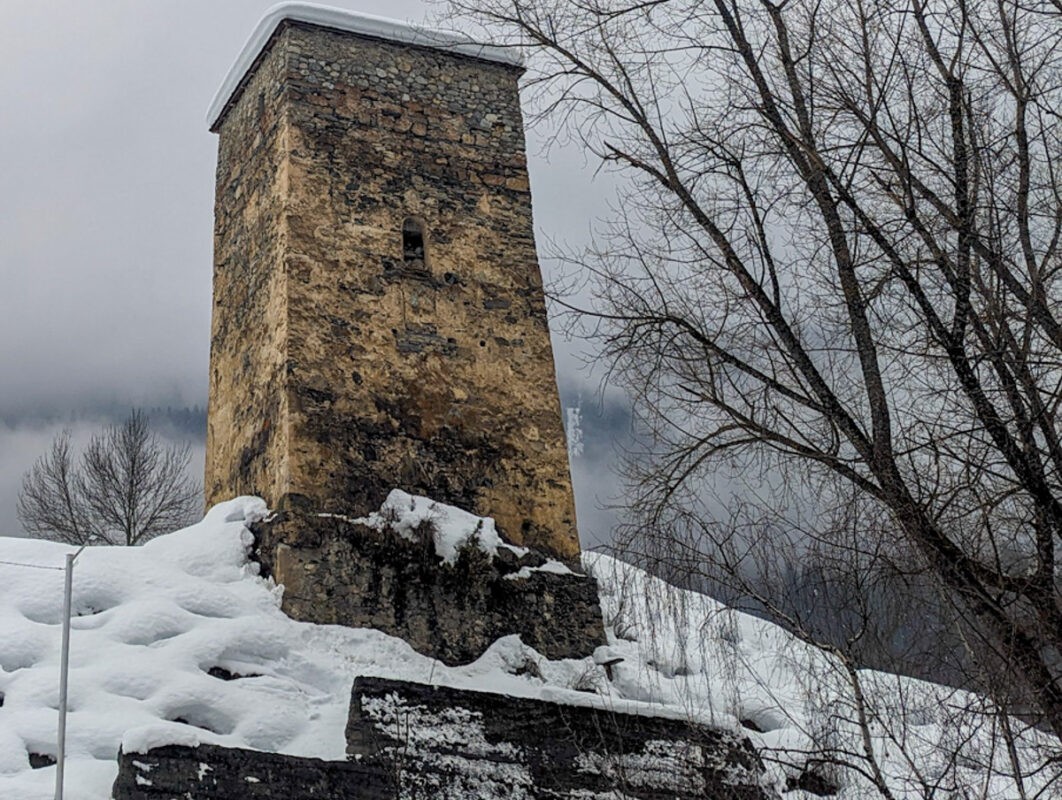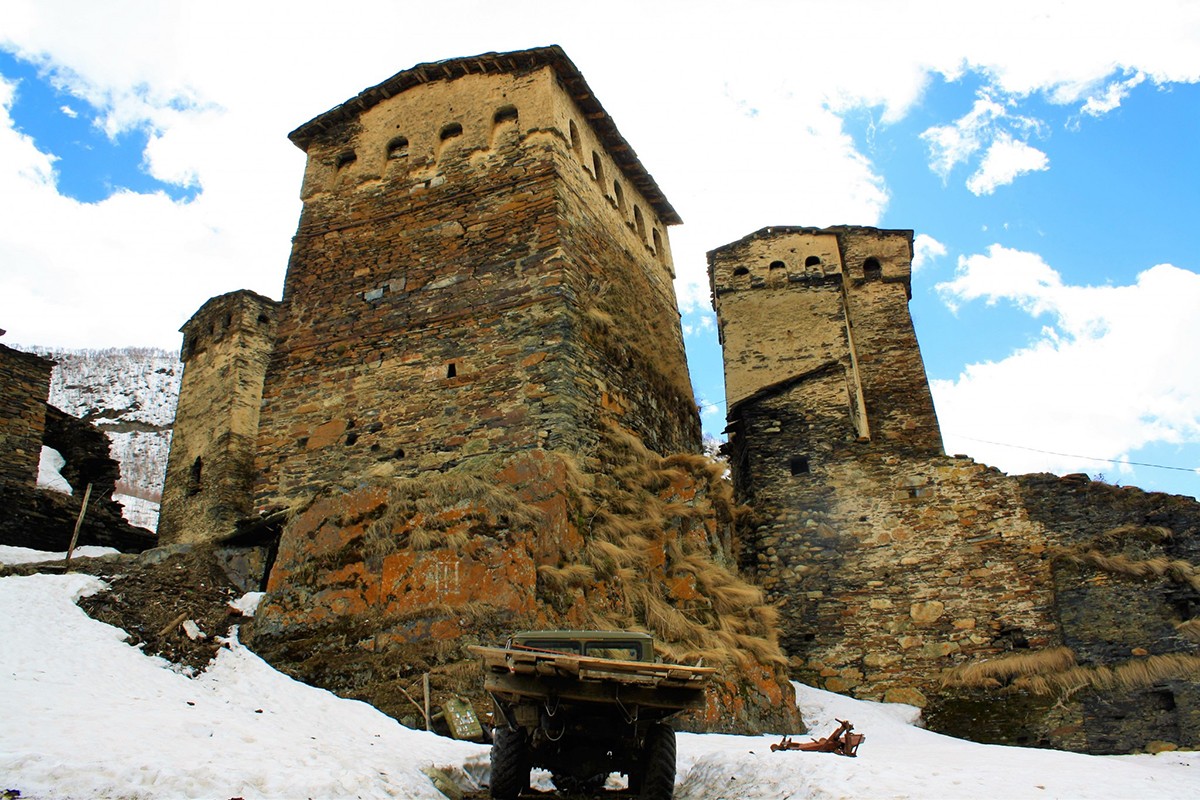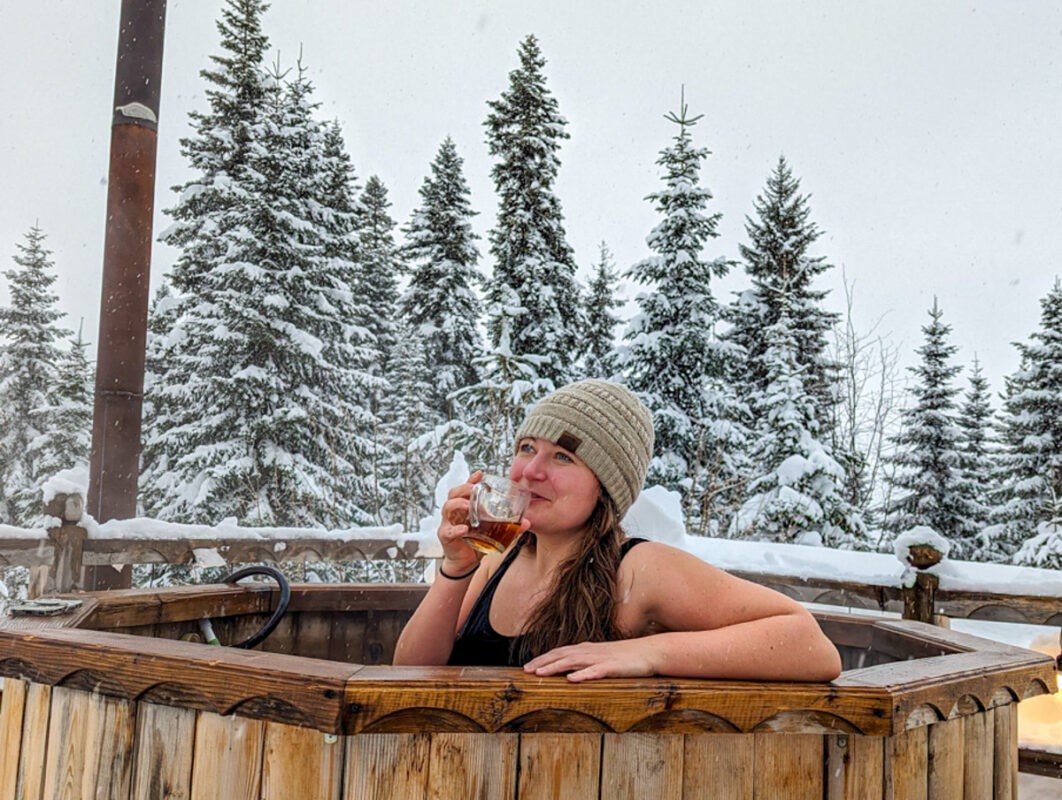Home to Georgia’s highest mountains, fascinating architecture and unique culture, Svaneti is one of Europe’s best hidden gems.
It’s not the easiest place to reach – but here’s why you should plan a visit in 2024.
The weather closed in as we switchbacked up the 1,400 metres of altitude that Mestia sits on top of, a route known for its thick snow throughout the winter season.
As we bumped along, visibility reduced to just a few centimetres in front; conditions poor enough for our driver to whip out his phone and record a Facebook live.
Our journey took seven hours as opposed to the two and a half hours that Google Maps told us – apparently, it was the worst snowstorm in 20 years.
Most journeys aren’t quite as hair-raising (our trip down the mountain was calm and scenic), and it’s this highland location, leading to its isolation, that has given this Georgian region a unique flavour that makes it one of the most appealing offbeat destinations in Europe.
We spent a week in this fascinating region of Europe, not long before it was voted 4th on National Geographic’s top 20 experiences to have in 2024.
And here’s WHY you should plan a trip!
I visited Svaneti on a press trip with Georgia Travel and Traverse Events. All opinions are my own.
Why you should plan a trip to Svaneti
Discover the most fascinating Svaneti facts below!
1. Svaneti has its own language

Miriam, the receptionist at Mestia’s Hotel Paliani, asked another member of the hotel staff something in Georgian.
She replied in a language – in a tongue that, to my untrained ear, was impossible to decipher.
“I asked her to say something in Svan” Miriam, who hailed from Tbilisi originally, told me. “But I couldn’t understand her either!”.
Technically a dialect of Georgia, Svan has barely any similarities to the country’s official language. And, despite the region’s proximity to Russia, it’s definitely unrelated to Russian.
It does still belong to the same family of languages as Georgian (Kartvelian), but ask any Georgian, and they’ll stress just how different the languages are. And, with just 30,000 to 80,000 speakers of Svan, it’s classed as a “definitely endangered language” by UNESCO.
While it may be spoken on the streets, Svan is not the official language of the region – schools and businesses are conducted in Georgian – but at homes or in the community, Svan is spoken first.
2. Food is different here
In my opinion, Georgian food is one of the most underrated cuisines in the world (particularly in the UK, where we have zero Georgian restaurants outside of London).
Khinkali, kachapuri and lobio all make up the diverse palate of Georgian dishes, with the famous adjaruli kachapuri hailing from the Black Sea region.
But in the mountains, food takes a different flavour.
You can still certainly sample most Georgian dishes here, although traditionally, the diet is more meat and dairy-heavy, due to heavy snow blanketing most of the region throughout the cooler months.
Traditional dishes include kubdari, which is a meat pie (like lobiani, but with meat instead of beans), chvishtari which is a cheese-filled cornbread and tashmijabi, cheesy mashed potato.
But don’t worry if you’re vegan or need to eat vegetables every day; even in the depths of winter, we found an abundance of salads, phakali and bean dishes.
3. Historic village feuds led the way to fascinating architecture

Nowadays, snow ploughs and four-wheel drive vehicles ensure that Svaneti’s villages stay connected, even when metres of snow blanket the region.
But, centuries ago, it was very common for villages to become cut off for weeks in the winter months.
That, and the fact that there were sparse resources in the region, led to less togetherness and more village feuds; which could turn bloody!
Sometimes, villagers would rampage another to make use of its land or resources; to protect against this, the Svan people built tall towers to live in so they could see the surrounding areas.
Nowadays, these towers are protected buildings so they can’t be knocked down – although they’re not residential anymore (mainly they’re used for storage, with animals sometimes kept on the ground floor).
Some are “museums” these days; you can go inside them, see exhibits ( curiously, these mostly consist of taxidermy animals and farming equipment) and even summit to the top for a view over the town.
4. Extreme snowfall is something that’s just dealt with
A day after we arrived in Mestia, we heard hushed whispers around the town. “Yesterday was the worst snowfall in 20 years,” people told us.
Having seen the amount of avalanches on the road the day before, this made a lot of sense.
However, despite waist-deep snow in parts, life in Mestia continued as normal pretty much straight away the following day.
I left the hotel to explore the town, inching around the snow-covered roads. Mestia’s street dogs, seemingly unfazed by the weather, ran to say hello and I saw people shovelling snow off their roofs.
Later in the day, cars were venturing down the ice-covered roads and despite the snow, businesses remained open and ski resorts thrived.
Apart from the feet of snow on the sides of the road, everything seemed very much business as usual!
5. It’s home to Europe’s highest continuously settled village

A two-hour drive from Mestia, you’ll find the village of Ushguli, sitting at 2200 metres of altitude.
This village epitomises remote – it’s an arduous mountain road in and out – yet there are about 200 citizens who live there year-round, even when it’s covered in snow for six months out of the year.
As you’d expect, Ushguli isn’t an easy place to visit – our trip was rescheduled once as the heavy snow cut it off – and I opted not to go on the arranged day trip as I was nervous of more landslides after our experience getting to Mestia.
But most of the group went and all was well on the roads!
Take a look at my partner’s post about visiting Ushguli (he visited some years prior) for more information.
6. Traditional clothing is mountain-inspired
With such dramatic weather, it’s unsurprising that Svanetian clothing has adapted over the years!
One of the most interesting garments is the Svan hat.
These are made with sheep’s wool, using a process called felting. Layer upon layer of sheep’s wool is woven and compressed, making the hat hard and insulating.
Perfect for those freezing winter days!
Traditionally, these hats were worn by men and not women. Nowadays, they’re thought to be a symbol of luck and are worn at traditional events, although not typically in day-to-day life.
7. Festivals like Lamproba aren’t celebrated anywhere else
“One of the most interesting celebrations in Svaneti is Lamproba” Miriam told me. “It happens on 14th February every year, but it’s no relation to Valentine’s Day”.
In a festival that to me is reminiscent of Mexico’s Dia de los Muertos, during Lamproba villagers visit their loved ones’ graves in cemeteries.
Here, they light fires at the bottom of their graves. The idea is that 14th February has been the coldest day in Svaneti, and by lighting a fire, locals are warming their loved one’s feet in the afterlife.
It’s not celebrated elsewhere in Georgia and is another reminder of how Svaneti very much developed its own cultures and customs.
8. Despite this, there are historic connections with places all over the world

After taking seven hours to drive 70 km, it’s challenging to imagine Svaneti connecting with anywhere in the world.
But, I reminded myself, that the snow melts in the summer, and Svaneti is much more accessible.
As we wandered around the Svaneti Museum of History and Ethnography, one of the largest Georgian cultural collections in the world, we discovered coins from Syria and Egypt and Svan icons influenced by the Byzantines.
Bronze and copper monuments nod to how people have lived here since at least the 2nd or 3rd century BC.
This museum documents the history of people in Svaneti; due to the region’s isolation, artefacts have been preserved here that haven’t as well in other parts of the country. This means it’s one of the best exhibits of Georgian artefacts in the world.
Planning a trip to Svaneti?

Check out my blog post about things to do in Mestia to learn more about activities and attractions.
However, here’s a quick run-down of everything you need to know for visiting Svaneti and Mestia.
- Getting to Svaneti: Honestly, I loved all parts of visiting Svaneti apart from getting here! We were unlucky with the weather but be very mindful of it (please don’t attempt it in stormy/ heavy snowfall weather) anytime in the winter months and be flexible with your plans. You can take a marshrutka from Tbilisi to Zugdidi (it may be most comfortable to stay a night here) and then transfer to the marshrutka to Mestia. Flights are also available.
- Where to stay in Svaneti: We stayed at Hotel Paliani, which was very friendly and welcoming, with lovely staff, an excellent restaurant and comfortable rooms. If you’d like a few more facilities and to be closer to town, Posta is another great option, although it didn’t have quite as homely/ personal vibe as Paliani. Click here to read more about it.
- Internet in Svaneti: The WiFi doesn’t work very well in Mestia, in part due to its remoteness and in part due to excessive Bitcoin mining in the area (but that’s a story for another day!). I’d recommend purchasing a sim card with Magti before heading here – they can sort out an e-sim card for low prices. Airalo didn’t work that well in Mestia.
- Getting around Svaneti: The bus station in the heart of town connects Mestia with Ushguili and other villages. Chat with your hotel staff about this!
- Safety in Svaneti: Crime-wise, Svaneti is very safe (as is most of Georgia!). The only real issue is the road leading to Mestia, which we saw in very bad conditions – there is also a risk of landslides on other mountain roads in Svaneti. Be very mindful of the weather in the winter and early spring due to this.
For more information about visiting this country, check out Georgia Travel.

